Thorma Almeria Handleiding
Bekijk gratis de handleiding van Thorma Almeria (30 pagina’s), behorend tot de categorie Kachel. Deze gids werd als nuttig beoordeeld door 6 mensen en kreeg gemiddeld 3.7 sterren uit 3.5 reviews. Heb je een vraag over Thorma Almeria of wil je andere gebruikers van dit product iets vragen? Stel een vraag
Pagina 1/30

ALICANTE, VALENCIA, ALMERIA
1
Installation and operation manual solid fuel fireplace insert
GB ALICANTE, VALENCIA, ALMERIA
tested according to the standard EN 13229
1. Installation manual
1.1 General
Fireplace insert for solid fuel is a single-shaft heating device which replaces the existing heating for short periods between seasons or
supports it in the cold seasons. Fireplace insert is designed for local heating. Fireplace insert can be installed in a normal environment.
This fireplace insert has been tested according the standard EN 13229 with fuels: wood and brown-coal briquettes. This fireplace insert
met the requirements of this standard.
All local regulations, including regulations relating to national and European standards have to be followed when installing the fireplace
insert.
Before mounting the fireplace insert, you have to inform the competent master chimney sweep who will inspect as expert the proper
connection of fireplace insert to the chimney. Fireplace insert must be installed on floorings that have corresponding loading capacity. By
installation, it is necessary to ensure sufficient space for cleaning of fire insert, flue and chimney. The fire insert must be closed during
operation, but also when not in operation, because otherwise it might significantly affect other devices connected to the chimney.
Combustion chamber is enclosed by sheet metal plate filled from inside with vermiculittes. In the bottom part of the combustion chamber,
there is the bed with cast-iron grate. There is an ash box under the grate. Stokers door are sealed with gasket. The door may be opened
only to add fuel. The stokers door are paned with highly heat-resistant glass-ceramic.
The smallest size of the front opening in the lining of fireplace insert is: width 600 mm and height 750 mm. Surface temperatures of the
lining can reach, depending on thermal resistance coefficient of the used construction material and its thickness, within the range between
30 and 80°C.
NOTE: when claiming or ordering spare parts always quote the name, type and serial number given on the data card.
1.2 Specifications
Nominal capacity:
8,0 kW
Nominal heating capacity efficiency:
wood = 82,3 %, lignite briquettes = 70,5 %
Operating chimney draft:
10 Pa
Height with legs
825 mm
Width
ALICANTE=588 mm, VALENCIA=590 mm, ALMERIA=600 mm
Depth
ALICANTE=392 mm, VALENCIA=423 mm, ALMERIA=385 mm
Draught shaft diameter:
Ø150 mm
Weight
ALICANTE=61 kg, VALENCIA=75 kg, ALMERIA=71 kg
Recommended fuel:
- dry hard wood: approximate heating value 15 MJ.kg-1
- lignite briquettes: approximate heating capacity 20 ÷ 23 MJkg-1
Approximate consumption of recommended fuel at nominal capacity:
- wood: 2.2 kg.hod.-1
- lignite briquettes: 1.7 kg.hod.-1
Heating capacity:
- favourable type of construction: 190 m³
- less favourable type of construction: 145 m³
- unfavourable type of construction: 98 m³
Applicable standards: EN 13229
1.3 Connection to the chimney
At installation comply with all corresponding project, safety and hygienic regulations.
Data to calculate the chimney (at the nominal thermal power):
Fuel
Brown-coal briquettes
Wood
Flue gas flow [g/s]
10,0
6,1
Max. flue gas temperature behind exhaust throat [°C]
377
312
Min. blast draught at nominal thermal power [Pa]
10
10
The fireplace insert can be used to connect a multi-occupied chimney, which means that to the chimney with the fire insert connected,
we can connect more devices.
Before connecting the fireplace insert, make sure there is sufficient blast in the chimney. Flame of a burning paper or candle should be
sucked into the chimney opening. The fireplace insert should be attached to the chimney flue in the shortest direction.
The fireplace insert should be attached to the chimney flue always with the consent of competent chimney sweeper office in compliance
with STN 73 4210 and STN 73 4201.
If the fireplace insert cannot be attached to the chimney flue directly, the flue involved should be the shortest possible and ascend towards
the chimney. Flues can be of maximum 1,5 m length. In any case, it is necessary to ensure smoke tubes and bends, mounted on exhaust
throat, against getting loose by a pin. Smoke tubes and bends must be attached firm and tight to the fireplace insert and plugged into

ALICANTE, VALENCIA, ALMERIA
2
each other by minimum 40 mm length in the direction of chimney blast. The chimney opening must be fitted with a sheet metal case with
a diameter corresponding to the diameter of used smoke tubes.
Correct and incorrect connection of fireplace insert to the chimney is displayed in Figure 1.
Connection to the chimney
Incorrect Correct
Figure 1
To ensure a failure-free operation, the chimney blast must be kept at 10 Pa (measured inside of smoke tube behind the fireplace insert).
As the chimney blast can be affected by changeable factors, as the outside air temperature, combustion temperature, chimney lining,
wind power, etc., it varies during the year. Therefore it is recommended to install a damper inside of the chimney.
The fireplace insert can reach the specified performance and efficiency as long as it is connected to a chimney with sufficient blast
draught. The chimney´s cross section must be 150x150 mm, and minimum height 5 meters.
1.4 Space venting
The fireplace insert operation requires sufficient space venting, meaning incoming flow of outside air into the space where the fireplace
insert is operated. That can be done through an open window or open external door. However, it is safer, if together with the installation
of fireplace insert a special opening is made in the external wall, in the area where fireplace insert is mounted, in order to ensure sufficient
incoming air flow for combustion. Adjustable ventilation grille, opened and closed from inside, should be embedded in the opening. The
fireplace insert needs for wood combustion up to 20 m3 of fresh air per hour.
Insufficient air flow runs counter to proper operation of fireplace inserts and is a threat to your safety!
Let the installation of your fireplace insert, its connection to chimney and venting be tested by a competent chimney sweep in
your area!
1.5 Fire safety
It is obligatory to strictly adhere to the rules of fire safety covered by STN 92 0300.
In case of nearby flammable building material or objects with combustibility degree B, C1 and C2 according to STN 73 0823, place the
fireplace insert with appropriate flue at safe distance which is at minimum 400 mm from these objects.
Safe distance should be doubled if the fireplace insert with flue was standing close to material with the combustibility degree C3. The
same applies if the degree of combustibility for the material cannot be proved.
Safe distance can be decreased to half in case of using a nonflammable, heat-insulating shading board, min. 5 mm thick, placed in such
a way there is 25 mm gap left between the board and the protected flammable object.
If the flooring is made of flammable material, place the fireplace insert on nonflammable, heat-insulating pad with dimensions exceeding
the contour of fireplace insert by 300 mm in the front and by 100 mm on all other sides. The smallest dimensions of the pad and the
location method are displayed in Figure 2. Shading board placed on the protected object must exceed the contour of fireplace insert,
including the smoke tubes, by at least 150 mm on each side and at least 300 mm above the upper area.
In case of fire in chimney follow the fire safety rules.
Safe distance between the outer skin of fireplace insert (on sides and behind) and the internal wall of backing must be at least 10 cm.
Minimum dimensions of air intake of interior air are 20x20 cm.
Minimum dimensions of exhaust outlet of heated air are double the size of air intake.
The fireplace insert lining must be of fireproof material.
2. Operation manual
2.1 Important safety instructions
In case of conditions leading to danger of temporarily present flammable gases or when there is a danger of fire or explosion (e.g. bonding
of floor coverings), the fireplace insert must be shut off before the danger arises.
The fireplace insert must be operated according to this manual. It can be only operated by adult persons; it is unacceptable to leave
children close to the fireplace insert in operation.
No flammable liquids can be used to heat up.
IT IS FORBIDDEN TO INCREASE THE NOMINAL THERMAL POWER OF THE FIREPLACE INSERT USING FLAMMABLE LIQUIDS.
The fireplace insert cannot be operated with stoker door open.
Ash has to be disposed of carefully, and placed in nonflammable containers with cover; hot ash cannot be placed in ash bins or kept in
open air.

ALICANTE, VALENCIA, ALMERIA
3
Damaged or nonoperational fireplace insert cannot be used. The user must provide its professional repair before using it again.
Ash accumulation in smoke tubes and bends must be checked at least once a month and cleaning provided when required.
During operation, all air supplies to fireplace insert must not be closed.
During operation, it is necessary to monitor the functions of the fireplace insert and the fire safety. You must check the amount of fuel in
the hearth, sooting of the grate, conditions of control mechanisms of combustion air, if the door is closed and if the surrounding is clean.
Broken vermiculitte brick in hearth is no obstacle to further use of fireplace insert. This does not apply to ceiling vermiculite.
When used simultaneously with other heating device, proper area venting must be provided (see part 1.4).
2.2 Fuel
This fireplace insert is intended for use of: wood, brown-coal briquettes 7”, 6” long.
Emission standard dictates that only naturally dried wood (humidity content max. 20%) can be used. Wet wood causes strong tar
condensation. The most suitable are wooden logs with diameter of 30 cm and 30 cm long, stored in dry place for at least 2 years. Most
suitable are: beech, oak, hornbeam, birch and fruit trees wood.
Only fuel mentioned above can be used.
Unacceptable for use is also: carbon grit, finely chopped chips, bark and chipboard waste, wet wood and wood treated by a prophylactic,
paper and pasteboard (except heating up).
Waste combustion is forbidden by Law of protection against emissions.
Combustion gases produced by waste combustion can threaten your health and cause damage to chamotte and metal parts of your
fireplace insert and to your chimney.
2.3 Fire inserts setting
The fireplace insert has one control valve for air supply and control of primary and secondary air flow situated under the door.
NOTE: the control mechanisms can be very hot! Use the glove supplied as an accessory for manipulation of hot objects.
2.4 Heating up
Before heating up you must open air supplier. At the same time, ensure air supply to the room (see part 1.4). Recommended fuel should
be supplied at the nominal thermal power in intervals of one hour.
Fire is set up using paper and thin wooden chips. Never use petrol, alcohol, kerosene, etc. Place a layer of wooden logs and briquettes
on the fire.
Never use more than three wooden logs as fuel load.
When using the fireplace insert for the first time, heat it up with a small fire. First, wait until the fire becomes bigger so that the fireplace
insert could slowly and evenly extend and the fireplace body will not suffer any damage due to temperature tension.
In case of difficulties with heating up (weather changes, cold chimney, etc.), local fire is set up in the fireplace insert using paper to heat
it up better. During heating up it is necessary to check on the combustion and constantly monitor the fireplace insert. The fireplace insert
is covered with heatproof paint that hardens at higher temperatures. Therefore smell is produced during the first phase of heating up. For
this reason, especially at the first use, sufficient venting must be provided. We do not recommend touching the external paint of the
fireplace insert when using for the first time, because it is not yet hardened and it could be damaged.
2.5 Normal operation
Nominal heating capacity of fireplace heater is 8,0 kW and it is obtained at minimum supply pressure of 10 Pa.
Fuel
Wood logs
(25 cm length, 30 cm circumference)
Lignite briquettes
Maximum dose
2,2 kg/hour
1,7 kg/hour
Slider
pull out 10 mm
fully open
Burning time
1.0 hour
1.0 hour
When burning wood, set the slider (pull out to 10 mm) so that the primary combustion air intake is completely closed and the secondary
combustion air intake is fully open.
When burning lignite briquettes set the slider (pull out completely) so that both primary and secondary air intakes are fully open.
The combustion air slider is below the firing door.
Quantity and adjustment of combustion air for moderate operation:
Fuel
Lignite briquettes
Maximum dose
approx. 1,7 kg/hour
Slider
open at 5 mm
Burning time
approx. 2 hours
Product specificaties
| Merk: | Thorma |
| Categorie: | Kachel |
| Model: | Almeria |
Heb je hulp nodig?
Als je hulp nodig hebt met Thorma Almeria stel dan hieronder een vraag en andere gebruikers zullen je antwoorden
Handleiding Kachel Thorma

12 Oktober 2022

12 Oktober 2022

12 Oktober 2022

12 Oktober 2022

12 Oktober 2022

12 Oktober 2022

12 Oktober 2022

12 Oktober 2022

12 Oktober 2022

12 Oktober 2022
Handleiding Kachel
- Just Fire
- Day
- Bartscher
- Termozeta
- Eurom
- Klarstein
- Dik Geurts
- Jaga
- Nordic Fire
- Econo-Heat
- Animo
- Wamsler
- Cotech
- Piazzetta
- Inventum
Nieuwste handleidingen voor Kachel
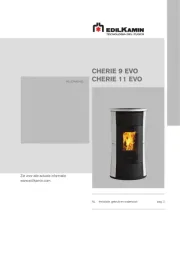
31 Augustus 2025
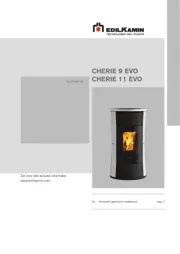
31 Augustus 2025
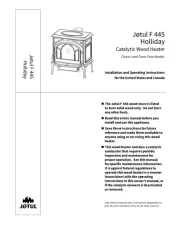
22 Augustus 2025
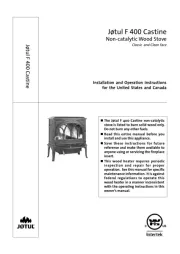
21 Augustus 2025
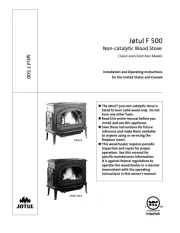
21 Augustus 2025
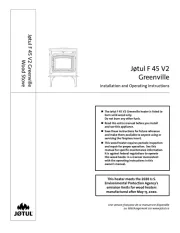
21 Augustus 2025
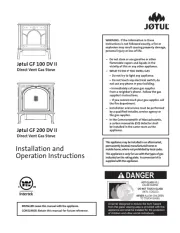
20 Augustus 2025
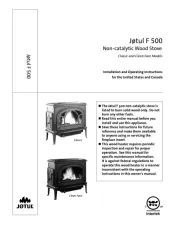
20 Augustus 2025
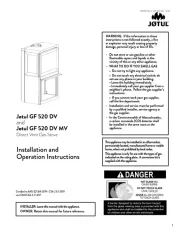
20 Augustus 2025
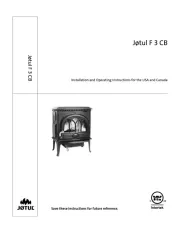
20 Augustus 2025